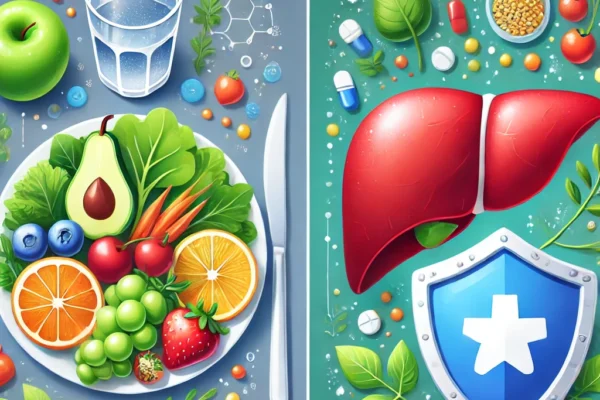Renotonia Diet Blueprint: 9 Powerful Food Rules and Lifestyle Habits
Understanding Renotonia vs. Vesicotonia
In 8 Constitution Medicine, Renotonia and Vesicotonia both belong to the water-dominant constitutions. While they share a common weakness in the spleen-stomach system, their clinical expressions differ greatly.
- Vesicotonia: Digestive issues arise due to a weak stomach—food quantity must be managed.
- Renotonia: Issues arise from overactive kidney-bladder function—food type is more important.
Digestive Profile: Tolerant but Sensitive
Renotonia individuals often handle food volume better than Vesicotonia types. However, their energy is easily depleted by improper food choices, external heat, and excessive sweating. Their system is strong yet sensitive to imbalance.
1. Avoid Sweating and Overheating
Sweating significantly weakens Renotonia types. This is especially noticeable during warmer seasons like spring and summer, when fatigue and digestive issues are more common. Avoid:
- Saunas, hot baths, and steam rooms
- High-intensity workouts
- Prolonged exposure to heat
Prefer:
- Swimming
- Gentle walking
- Meditation and breathing exercises
- Indoor stretching and cool-air yoga

2. Warm Showers, Not Hot Baths
Baths should be brief and warm—not too hot—to prevent excessive sweating. Finishing with a cool rinse can help stabilize energy circulation.
3. Avoid Overthinking
Renotonia individuals are prone to mental overexertion. Excessive rumination worsens fatigue and digestion. Emotional clarity and light-hearted activities are essential for balance.
4. Harmful Foods for Renotonia diet
Avoid foods that either over-cool or over-stimulate the system:
- Cold foods: Ice cream, iced beverages, cold noodles, barley tea
- Raw foods: Sashimi, uncooked greens
- Heavy meats: Pork, egg whites
- Grains: Barley, red beans
- Seafood: Shellfish, squid, eel, carp
- Fruits: Melon, banana, pineapple, persimmon
- Others: Perilla oil, cucumber, beer, goji tea
- Color: Black-toned foods or clothing
- Exercise: Anything that produces heavy sweating
5. Recommended Foods for Renotonia diet
These foods balance Renotonia’s strong internal energy while supporting digestion:
- Proteins: Chicken, beef, lamb, goat, venison
- Grains and vegetables: White rice, glutinous rice, brown rice, corn, potato, radish, carrot
- Seaweed: Laver, kelp, sea tangle
- Warming ingredients: Ginger, onion, mustard, cinnamon, pepper, curry
- Fruits: Apple, tangerine, orange, black grapes, mango, tomato, pear
- Others: Scorched rice (nurungji), roasted rice tea, sesame oil, jujube, honey, royal jelly, citrus teas
- Color: Bright reds and yellows
Always eat food warm.
6. Daily Practice Tips for Renotonia
Renotonia types benefit greatly from planning their meals ahead of time, especially during seasonal transitions. Keeping a weekly food diary to track fatigue, digestion, or emotional changes after meals helps optimize their diet. Avoid eating late at night, and make dinner the lightest and warmest meal of the day. Gentle soups, rice porridges, or steamed vegetables are best. Creatively expressive hobbies—such as journaling, playing music, or painting—can help regulate the mental overactivity common in Renotonia types without exhausting the body.
7. Summer Coffee Habits and Cold Drinks
Like Colonotonia types, Renotonia individuals should avoid iced drinks such as iced coffee during summer. These beverages can seem refreshing but ultimately drain internal energy and harm digestion.
8. Similarities to Colonotonia
Renotonia shares strong kidney and lung energy patterns with Colonotonia. Both types should:
- Reduce meat intake
- Avoid seafood and overly cooling foods
- Prioritize warm, simple meals year-round
9. Sample Daily Meal Plan for Renotonia diet
Breakfast:
- Warm rice porridge with shredded chicken and carrots
- Roasted barley tea (served warm)
Lunch:
- Steamed white rice
- Grilled beef with radish and onion
- Warm kelp soup
- Stir-fried spinach with sesame oil
Dinner:
- Pumpkin porridge
- Boiled potato with cinnamon and honey
- Warm yuzu tea
Snack (if needed):
- A few slices of pear or baked apple (served warm)
Final Thoughts
Renotonia types must balance strong surface energy with internal sensitivity. Avoiding cold, raw, or stimulating foods, minimizing sweat, and maintaining emotional calm are key to long-term digestive and energetic health.
One-Line Summary:
Renotonia thrives not on quantity, but on quality—and warmth. Would you like a seasonal version of this meal plan next?
For the original Korean text, visit here. If you’re curious about the basics of traditional Korean medicine and health, read the following article:
The Truth About 8 Constitution Medicine: A Revolutionary Healing Framework Explained
What Your Sleeping Position Says About Your Health
Learn Why Studying JangSang Medicine is Important.
Frequently Asked but Silly Questions (Foods Good for the Liver??)


